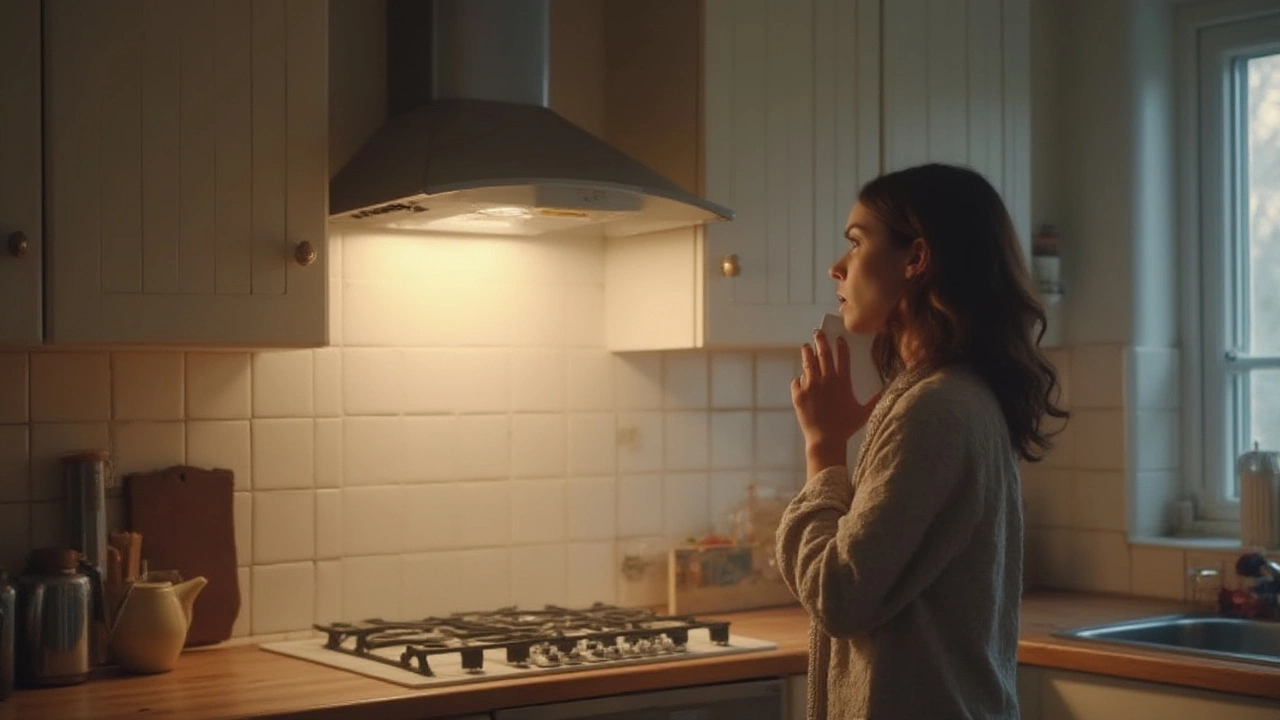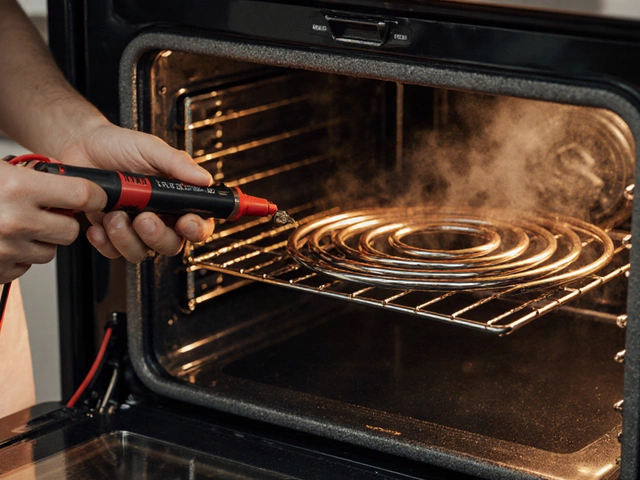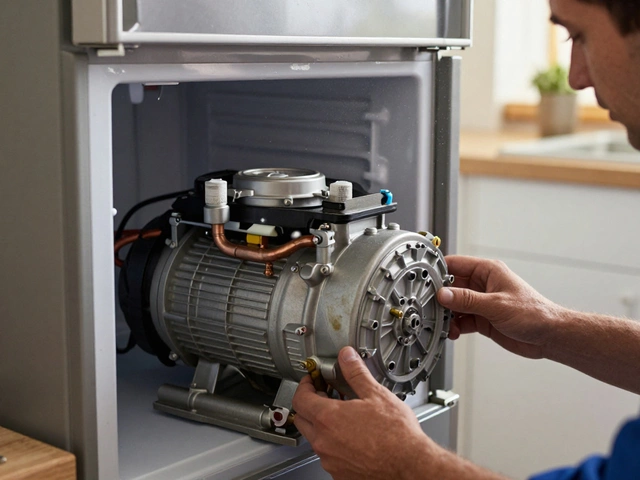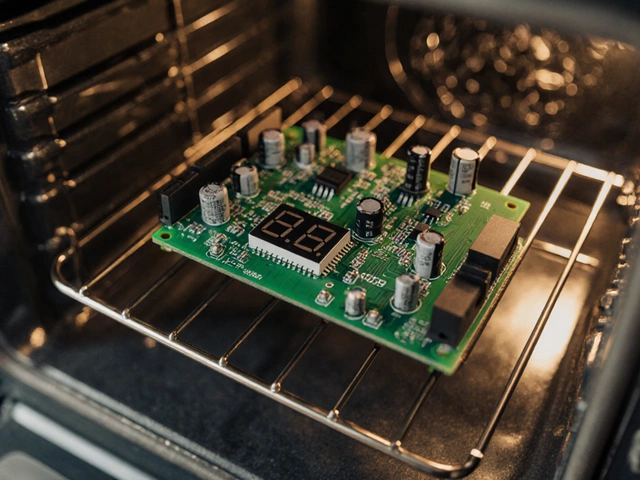If your extractor fan starts rattling, loses power, or just stops working, suddenly the air in your bathroom or kitchen gets heavier—humid, sticky, and a bit gross. You might even notice mold spreading in corners where steam can’t escape. Most people don’t realize it, but fans are your home’s unsung heroes, fighting against hidden water damage, nasty smells, and even unhealthy air quality. When they break down, you can’t just shrug and ignore it. The real question haunting most homeowners: Who actually fixes extractor fans? If you’ve ever found yourself staring at a dead fan, trying to decide between calling a handyman, electrician, plumber, or even attempting a DIY rescue, you’re definitely not alone. The answer is simpler—and more surprising—than you think.
Which Trade Repairs Extractor Fans?
The word “extractor fan” covers a huge range of devices, from sturdy kitchen fans above your hob, to smaller, silent ones in your bathroom that whisk away shower steam. When these fans act up, you can’t just rip them out and fit a new one—especially because in most homes, extractor fans are closely tied into your electrical wiring and venting systems. That’s where people often get confused: do you need an electrician or can a plumber fix it since it’s usually near humid environments?
The truth is, almost always, you should call a qualified electrician for extractor fan repairs. This is not just me trying to make your to-do list easier—there’s real reasoning behind it. Extractor fans are powered by your home’s electrical system, and safe repair needs a knowledge of wiring, connections, and sometimes even your circuit breaker panel. On top of that, replacing or repairing a fan often requires safely isolating the power to prevent electric shocks, something that’s no joke—even low-voltage connections can be dangerous if mishandled. A good electrician can diagnose the usual suspects like faulty wiring, burned-out motors, and worn switches.
You might hear of “ventilation engineers” or “HVAC technicians” (that stands for Heating, Ventilation, and Air Conditioning), but for most domestic jobs, especially wall or ceiling fans in homes and small businesses, an electrician is your go-to. Here and there, plumbers might install extractor fans during bathroom fits, but actual fan repair or replacement is down to someone with electrical expertise. Crooked installations or improper wiring causes more issues than cheap fans. According to a 2023 report by the UK Electrical Safety Council, nearly a third of home callouts for bathroom extractor fans were related to DIY wiring mistakes—a stat you don’t want to add to.
If your fan is a ducted system with long vent pipes stretching through your home or integrated into a commercial setting, then you might need someone who specializes in “ventilation system maintenance”—but that’s rare in most homes. At that point, you’re usually talking about full system upgrades, not just a noisy or non-working fan. In typical houses or flats, electricians handle problems like flickering lights, tripping breakers, and yes, your misbehaving extractor fan.
Common Extractor Fan Problems and What Causes Them
So, what actually goes wrong with extractor fans? These devices look simple, but under the cover, a lot can break and make your life annoying. It pays to know the signs and possible causes because once you spot a small problem, you can typically get it fixed fast and skip the stress of total replacement down the road.
- No power/noise: If the fan just won’t start, odds are you have an electrical issue—sometimes a loose connection, a blown fuse, or a tripped circuit breaker. On rare occasions, the switch or control could have gone bad, too.
- Runs but smells bad: Mold, mildew, dust, and debris building up inside the fan or ductwork cause musty odors. A deep clean or full replacement may be needed.
- Makes weird noises: Grinding, whirring or rattling usually points to worn bearings in the motor, a broken fan blade, or screws coming loose. Running it while it's rattling can actually burn out the motor faster—best to switch off and call an expert.
- Weak airflow: Often a clogged vent, blocked grille, or a dying fan motor. Sometimes it’s just the fluff and dust that’s built up over time. But if you’ve tried vacuuming out the vent and it’s still bad, the fan itself may need replacing.
- Won't shut off: Modern fans are sometimes wired to timers or humidity sensors. If your fan keeps running, those controls could be at fault. This usually involves carefully checking the wiring and, occasionally, replacing a timer unit or sensor—best left to someone who knows their way around a multimeter.
Most problems trace back to aging components or neglect—fans are often ignored for years until they start failing. Humidity and dust are the enemy here; the average bathroom fan should have its grille and vents cleaned at least once every six months. A 2022 survey among appliance engineers in London found a whopping 61% of bathroom fans they were called to repair hadn’t been cleaned since they were installed. That’s wild considering regular cleaning keeps them running quieter and more efficiently.
Sometimes, faulty installations are to blame. If the fan was installed without enough airflow clearance, vented into a loft with nowhere for moisture to go, or poor-quality ductwork was used, the fan will struggle and wear out way faster. It’s worth paying a certified pro once, rather than living with ongoing headaches.

DIY Repairs vs. Professional Fixes: What You Can and Can’t Do
This is the part most people struggle with—should you even try to fix an extractor fan yourself? Plenty of YouTube tutorials will make easy fixes look, well, easy. But a lot of them gloss over the risks. Unclogging a vent or cleaning the outside grille takes no special skills. If you can safely reach the fan and know how to turn off the breaker, you can unscrew the faceplate and gently vacuum away dust or cobwebs. Fan covers often clip or screw off—just pay attention and don’t force things, as some older models break easily. Use a soft brush and vacuum crevice tool, not wet rags or sprays.
But when it comes to replacing internal parts, rewiring, or installing a completely new unit, it’s a different story. Building regulations in the UK and most places require extractor fans in certain rooms (like bathrooms) to be on their own fused spur or have specific isolation switches. DIYers without electrical training often skip these steps, creating fire risks or voiding insurance. Plus, some newer extractor fans contain electronics that sense humidity, have lighting, or timers—making DIY replacement a real headache.
There’s another reason to leave deeper repairs to the pros: warranties. Most new extractor fans carry two to three-year warranties, but if you take them apart yourself or swap out parts without using a certified electrician, manufacturers are quick to void these guarantees. If you want peace of mind, ask your electrician to document their work—many reputable tradespeople will provide a short report or take photos, which can be handy if you ever need to claim on a warranty or even just sell your house down the road.
“Electricity is invisible and silent, but its hazards are no joke. Never attempt repairs beyond basic cleaning unless you’re qualified,” says Mike Sims, a registered NICEIC electrician.
Certain repairs—especially in bathroom and kitchen zones—are considered ‘notifiable works’ under UK law. It’s vital to get them certified by a competent person for your safety and legal compliance.
So what’s okay for DIY? Stick to basic cleaning, changing the grille, or possibly swapping out a surface-mounted fan with a like-for-like unit—provided you can safely isolate the power and know what you’re doing. For everything else, especially where wiring or insulation is involved, call the electrician. You’ll save yourself a lot of hassle and possible danger.
How to Find the Right Expert (and Avoid Cowboys)
Okay, you know you probably need an electrician. But how do you find a good one—not just someone who can fix your fan, but who’ll do it safely and tidily? First, check for certification. In the UK, the NICEIC (National Inspection Council for Electrical Installation Contracting) and NAPIT are the main bodies that certify electricians. In the US and elsewhere, look for state or national registration and ask if they’re insured. Never hesitate to ask for proof before they show up—it’s normal in 2025 to see digital badges or scan a QR code for credentials.
Second, ask about experience with extractor fans specifically. Some sparkies are more used to heavy rewiring jobs and might not care about ventilation details. A solid tradesperson should ask about your setup: “Is it ducted or through-the-wall? Do you have mold problems, or is it just a dead motor?” If someone sounds bored or vague, keep looking—good electricians know poor ventilation threatens your health and won’t brush you off.
When getting a quote, expect clear prices for diagnosis, hourly labor, and what’s included (like a replacement fan or parts). Be wary of flat fees that sound too good to be true. If the price is suspiciously low, you might be dealing with an unregistered operator. There’s a reason the best tradespeople get busy quickly—smart home-owners don’t cut corners on electrical work. Spend a bit extra for the right repair; the cost of damaged wiring or fire far outweighs saving a few quid upfront.
Want to avoid middlemen? Many electricians now have dedicated websites or social media pages where they showcase before-and-after shots and even post reviews from customers. Local neighborhood groups (think Facebook or Nextdoor) are another solid bet for recommendations. If you see lots of “fan fixed in one visit!”-type comments, that’s usually a good sign.
Lots of people delay fan repairs, but why gamble? A non-working extractor is more than a minor annoyance; it risks expensive repairs down the line—from peeling paint, damp, and mold to bigger issues like electrical shorts. Don’t be the person who lets bathroom mist settle for months or whose kitchen stinks after every stir-fry. Find the right trade pro—the sooner, the better for your home and your sanity.





